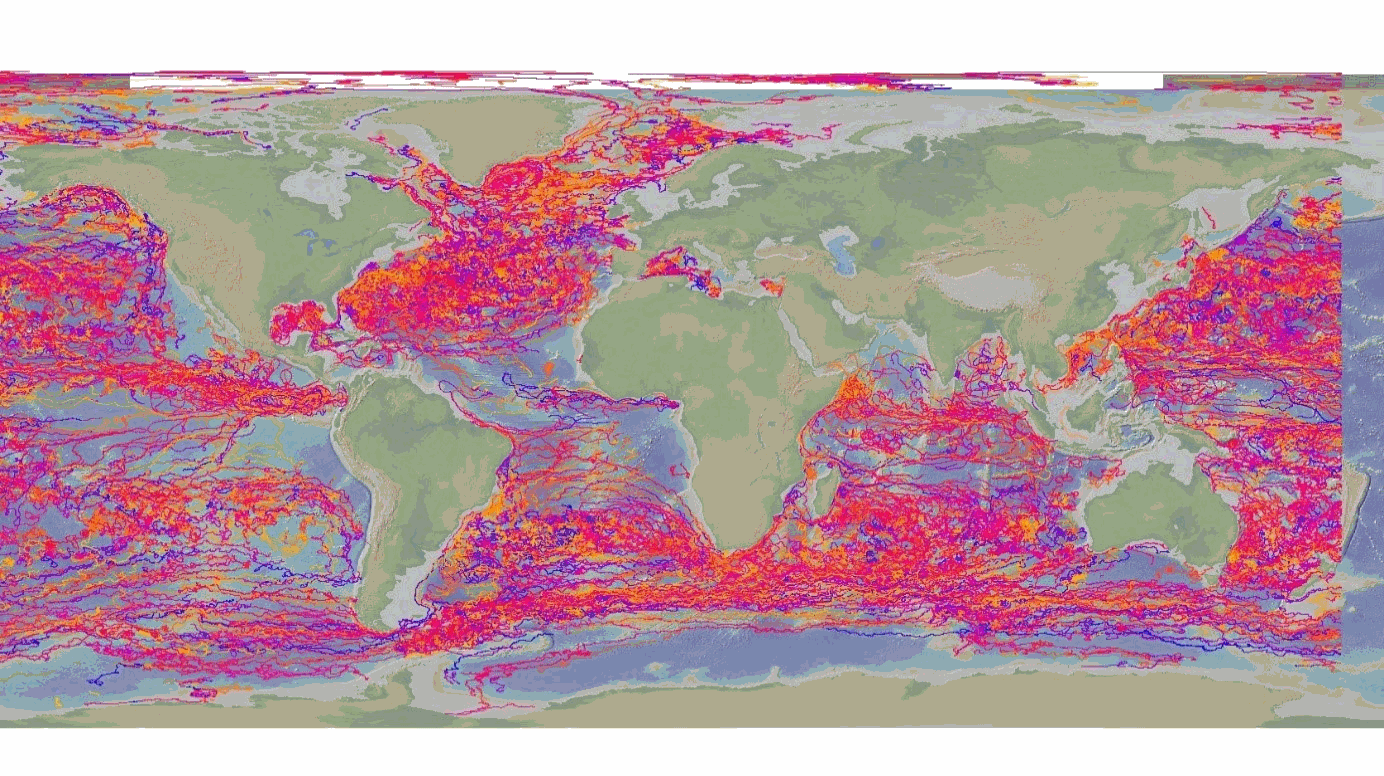Altran
Type of resources
Available actions
Topics
Keywords
Contact for the resource
Provided by
Years
Formats
Representation types
Update frequencies
status
Scale
-

C-RAID project is a global reprocessing of drifting buoys data and metadata. The C-RAID dataset contains the metadata of 20 000 drifting buoys, deployed between 1979 and 2018. The data of 16 965 drifting buoys have been fully reprocessed and scientifically checked (delayed mode including comparison with ERA5 reanalysis). Context: The WMO DBCP Drifting Buoys GDAC (Ifremer, Meteo-France and Ocean-Canada ) is dedicated to improved quality control and delivery of drifting buoy of “climate quality” data for the Marine Climate Data System (MCDS). Goal: clean-up an entire data archive for the past buoys deployed & reprocess the argos data & improve argos position quality (reprocessed with Kalman filter) Lead: The C-RAID project is funded by Copernicus through a contract with the European Environment Agency. Contract # EEA/IDM/15/026/LOT1 (For Services supporting the European Environment Agency’s (EEA) implementation of cross-cutting activities for coordination of the in-situ component of the Copernicus Programme Services). Stakeholders: DB-GDAC, Météo-France, EUMETNET (with its E-SURFMAR program), but also builds on NOAA AOML and JCOMMOPS expertise Challenge: reprocess/recover 22,000 years of data and make them accessible For whom? Copernicus Climate Change Service, Copernicus Marine Environment Monitoring Service, iQuam, ICOADS, GHRSST, ISPD, and ICDC. C-RAID deliverables - An improved drifting buoy data record for years 1979-2018 - FAIR interfaces to drifting buoys data in Ifremer GDAC: Web data discovery for human users API data discovery/subsetting/download services (machine-to-machine data access) What do we mean by “Improved drifting buoy data record”: - Missing datasets and parts of datasets recovered (data rescue) - Homogeneous and rich metadata and data format - Improved Argos locations with Kalman filter algorithm - Homogeneous QC and assessment on marine and atmospheric data
-

A world deep displacement dataset, named ANDRO, after a traditional dance of Brittany meaning a swirl, comprising more than 1300 000 deep displacements, has been produced from the Argo float trajectory data ('traj' files). ANDRO dataset was completed over the period 2000-2009, then was partially but yearly updated since 2010. For detailed information and status of the last released ANDRO product, please visit the dedicated Argo France web page: https://www.umr-lops.fr/SNO-Argo/Products/ANDRO-Argo-floats-displacements-Atlas One important feature of ANDRO is that the pressures measured during float drifts at depth, and suitably averaged are preserved in ANDRO. To reach this goal, it was necessary to reprocess most of the Argo raw data, because of the many different decoding versions (roughly 100) not always applied by the DACs to the displacement data because they were mainly interested in the p,t,S profiles. The result of our work was the production of comprehensive files, named DEP (for 'déplacement' in French), containing all the possibly retrievable float data.
 Catalogue PIGMA
Catalogue PIGMA